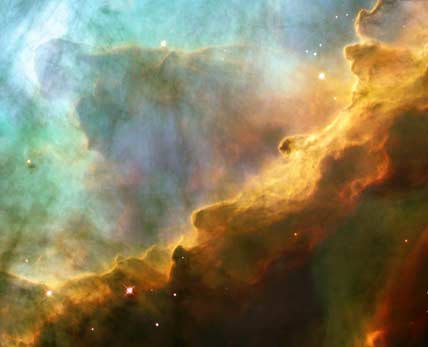
Courtesy NASA, ESA, and J. Hester (Arizona State University).
Looking like the roiling ocean in a Winslow Homer seascape, this seething mass of glowing gases is being lit by a flood of ultraviolet radiation emanating from young, massive stars out of the picture to the upper left. The radiation warms the cold clouds of hydrogen, shaping them into wavelike structures and causing them to fluoresce. The colors represent light from various gases: red for sulfur, green for hydrogen, and blue for oxygen.
This image, spanning about 3 light-years, depicts a small area of M17 (which goes by several aliases, including NGC 6618, the Omega Nebula, the Horseshoe Nebula, and the Swan Nebula), an active stellar nursery about 5,500 light-years away in Sagittarius.
The shot was taken by the Hubble Space Telescope's Wide Field Planetary Camera 2 on May 29-30, 1999, and released on the 13th anniversary of Hubble's launch (April 24, 1990). High- and full-resolution views are available from the Hubble Heritage Project site.
 0
0
Comments
You must be logged in to post a comment.